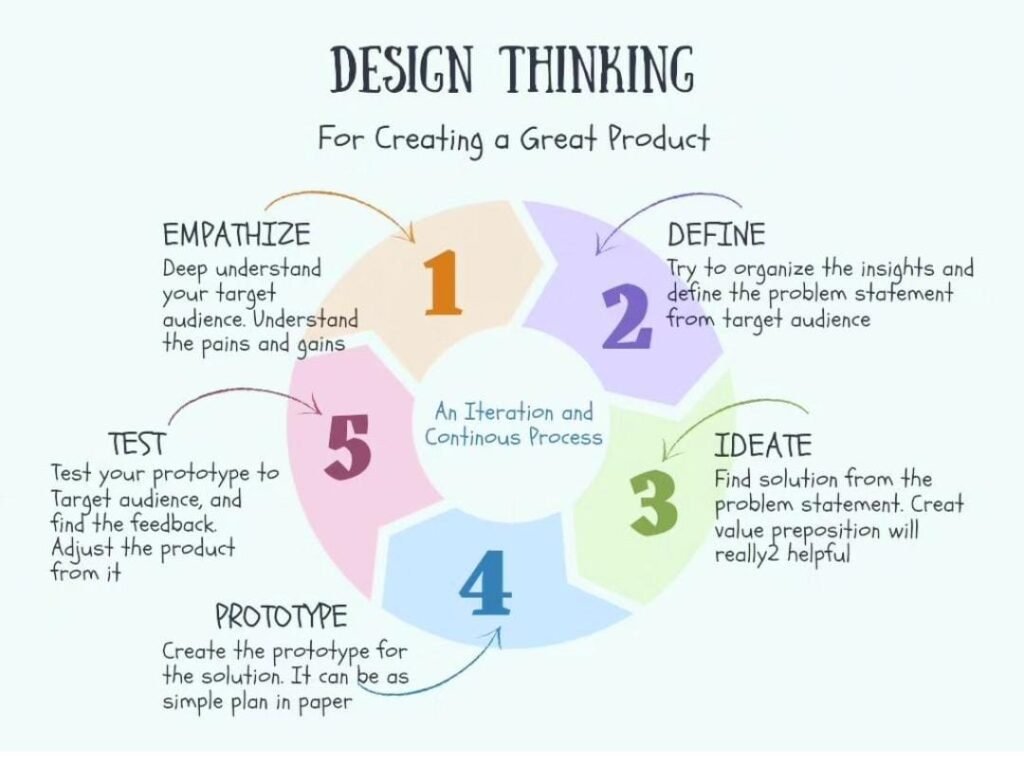Introduction
Design thinking has emerged as a widely embraced framework within the domain of product management. This approach centers on conceptualizing a product as a solution oriented towards the user’s perspective, emphasizing a continuous iterative process marked by trial and error. It is within this dynamic framework that innovative products find their genesis, addressing previously unmet consumer needs.

Empathize: Unearthing User-Centric Insights
The Empathize phase adopts an anthropological lens, demanding an immersive understanding of the target audience’s perspectives, needs, and challenges. Employing ethnographic techniques, this phase seeks to gather comprehensive insights into various facets, including:
- Demographic profiles
- Environmental contexts
- Socio-cultural frameworks
- Aspirations and hurdles in their lives
Define: Precision in Problem Articulation
The Define phase distills the amassed insights, transitioning from raw data to a refined comprehension of the underlying issues. Central to this phase is the formulation of a succinct, clear-cut problem statement. An exemplary problem statement is characterized by brevity, clarity, and a contextual explication of the issue. This phase encourages the generation of multiple problem statements, each imbued with its unique contextual nuances.
Example: “Persistent battery depletion during prolonged road standby”
Ideate: Fostering Innovative Solutions
With problem statements in place, the Ideate phase heralds the generation of potential solutions. This step involves discerning problem statements that lend themselves to viable solutions. Solutions, herein, are evaluated based on the 3V criteria:
- Visibility: Demonstrable in practice
- Viability: Attainable with available resources
- Value: Meaningful to consumers
Prototype & Test: Iterative Refinement
Having formulated a value proposition during the Ideate phase, the Prototype & Test stage introduces a tangible embodiment of the proposed solution. Prototypes can range from rudimentary conceptualizations on paper to comprehensive storyboards or mock-ups. Subsequently, rigorous testing ensues, soliciting user feedback to refine the solution. This iterative process may loop back to earlier stages as needed. While confidence may warrant accelerated progression, vigilance in continuous monitoring remains paramount.
Conclusion
Design thinking, as a foundational framework in product management, underscores the paramount importance of user-centricity and iterative refinement. Through its distinct phases of Empathize, Define, Ideate, and Prototype & Test, this framework engenders innovation by aligning products with genuine user needs. In adopting this approach, product managers stand poised to not only meet, but also exceed, consumer expectations, resulting in products that resonate meaningfully within the market landscape.





